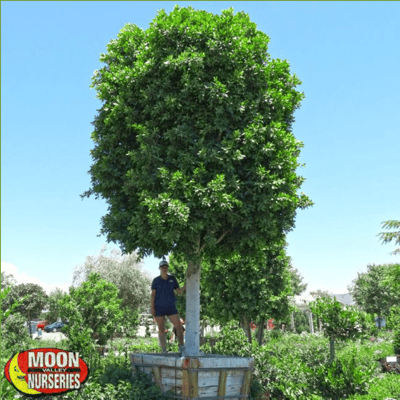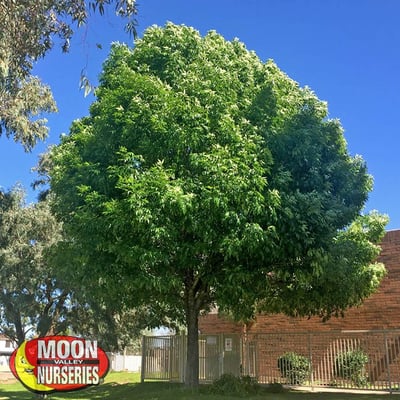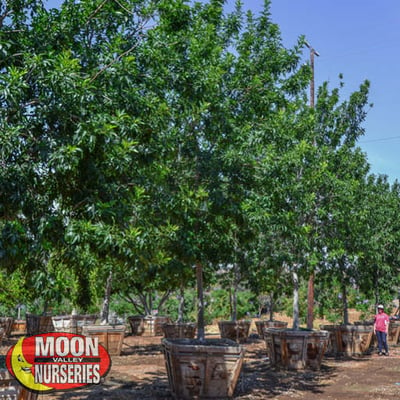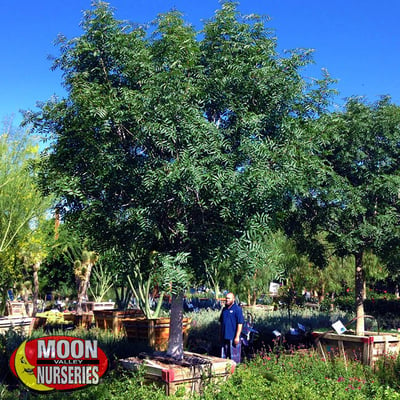
Explore Ways to Save the Planet with Trees
Trees are not just wonderful to look at, but they are also efficient machines that work day and night to make our planet safer and healthier. In fact, trees are so effective that many leading scientists claim tree plantation is one of the most efficient and sustainable ways to save the planet. To understand why let’s explore what trees can do for our planet:
1. Fight Heat Islands
Cities are so much hotter than the countryside, but have you ever wondered why? If you’re pointing to the lack of trees and other vegetation, you’re right! As we continue to replace vegetation and open lands with buildings and other infrastructure, we’re effectively stripping the landscape of its ability to reflect the sun’s heat. That’s because unlike vegetation that reflects heat, surfaces made with concrete and asphalt actually absorb it — essentially triggering the creation of urban heat islands. Fortunately, the reverse holds true as well. So to fight against heat islands, all we need is to plant more trees.
2. Reduce Carbon Dioxide
Global warming is one of the hottest topics today, and rising CO2 levels are at the core of it. Luckily, trees are really good at reducing CO2 levels, as they absorb carbon dioxide during photosynthesis and turn it into oxygen. Even a single mature tree is capable of absorbing as much as 48 pounds of this greenhouse gas per year.
Make it an acre of forest, and we’re looking at offsetting the entire CO2 emission of two average cars’ annual mileage. As a responsible citizen of this planet, you’ve probably already taken some steps to reduce the carbon footprint of your household. However, there’s only so much you can do to reduce it. To take your fight against CO2 emissions to the next level, you can plant multiple mature trees to offset it considerably.
3. Make Cities Green
Even though cities occupy just two percent of the world’s land, they account for over 60% of energy consumption. Worse yet, cities also account for 70% of greenhouse gas emissions and waste production. Unfortunately, urbanization is inevitable. No one can deny that. At the same time, however, we can do a lot of good for our planet and all its inhabitants by making our cities greener.
That’s because adding green spaces to a city can reduce its:
-
- Air temperature by up to 19 degrees Fahrenheit
- Air conditioning costs by 30%
- Road resurfacing costs by 60% over 30 years
So making our cities green is not a question of why — but how. Considering that a single mature tree has the same net cooling effect as ten air conditioners running 20 hours a day, planting more trees is an excellent way to make our cities green in more ways than one.
4. Reduce Water Pollution
Trees can help reduce water pollution in many ways. Urban runoffs are a major source of water pollution across the globe. To reduce runoffs, the complex root network of trees is highly effective as it breaks rainfall and directs the flow to earth.
Another source of water pollution is soil erosion, as the pollutants and sediments created from it can clog streams and rivers. Again, trees can solve this problem by binding soil to the land using their roots.
5. Improve Air Quality
Trees clean the air by absorbing pollutants such as nitrogen oxides, ammonia, and sulfur dioxide. On top of that, trees also filter many types of particulates by trapping them on their leaves and bark. Furthermore, trees are also excellent producers of oxygen as they absorb molecules of CO2 to release the same number of oxygen molecules. Just one acre of mature trees is enough to produce oxygen for 18 people. As the average person breathes around 9.5 tonnes of air each year, improving air quality is critical and planting more trees is easily one of the best ways to do so.
Let's Save The Planet Together
Every problem you’ve read in this article can be solved with one thing: trees. From reducing heat and pollution to improving the quality of air and our health with it — trees can do wonders for both our lives and our planet. If the thought of planting a tree on your own seems daunting, then come check out nurseries and let our experts handle the planting for you. With our slogan of “you buy it we plant it”, we’re always delighted to plant more trees. So, let’s save the planet together by planting more trees this decade!
Trees That Are Great at Reducing Heat Islands
When you are looking for tree to fight heat islands you should look for a tree with big leafy leaves. The bigger the leaf the more photosynthesis that happens and the more oxygen that is produced. Also, big leaf trees make the best shade trees, the bigger the leaf the more shade it produces. Here are the best trees to fight heat islands.
Indian Laurel
The Ficus Nitida, or Indian Laurel, is a beautiful dense shade tree that looks amazing and has many landscape uses. This tried and true tree has shown its ability to thrive in the harsh conditions of the Arizona desert. Ficus trees can handle the most intense summer heat and even flourish in Yuma which is regarded as even hotter than the Phoenix area! Because of its durability, beauty and mass amounts of shade it provides the Ficus Nitida has become the top selling tree we grow...and the most asked about.
Majestic Ash
The Majestic Ash, also known as the Evergreen Ash to some, is a great solution for just about any landscape that needs a large, fast-growing shade tree. The classic, larger-leaved, green foliage is attractive and compliments just about any landscape. Majestic Ash is generally grown in parks, commercial areas, and vast landscapes. The Evergreen Ash is simple to grow and always results in a perfect, park-style shape with minimal pruning and maintenance.
Magnolia
The Southern Magnolia tree is without a doubt one of the crown jewels of Texas all across the state. This mainstay in Texas landscapes has a wide array of benefits for your yard or project site. From the glossy leaves and their rusty brown-colored undersides to the magnificently fragrant jumbo flowers that bloom in spring and summer, Southern Magnolias provide excellent shade for your landscape. They make an incredible hedge for privacy, when planted in rows for a stunning look. They are also excellent standalone focal points that can reach heights of over 80 ft. tall and 50 ft wide.
Fan Tex Ash
This Fan Tex Ash growth rate is fast, and they have a tolerance for pollution so that they are an excellent choice for urban areas. These Ash trees thrive in a spot that gets plenty of full sun exposure! Plus, once established, they are drought tolerant with little to moderate watering needs. They can tolerate all kinds of soil conditions including acidic and alkaline as well as clay, loam, and sandy soil types.
Chinese Pistache
We love Red Push Pistache trees! They can be used to improve any landscape and the Pistacia 'Red Push' is a hybrid that can hold its stunning red fall color longer! It's deciduous so that its beautiful dark green foliage and large canopy can provide plenty of shade in the summer and let the warmth of the sun in during the winter! It's a perfect medium-sized tree that puts on a spectacular show in the fall when the leaves go from green to red, orange, and yellow tones! We like to plant them as a street tree, and when correctly placed around a home, mature-sized trees can provide shade in the summer so that it can help lower the temperature inside your house.
Tipu
This tree gives year-round interest with its feathery, bright bluish-green foliage and golden blooms that appear from spring to summer. Tipuana tipu is a fast-growing, semi-evergreen that is drought tolerant once established. Tipu trees love full sun exposure and can thrive in intense desert heat and cold. It is a versatile tree that is perfect as a street or lawn tree and around a patio or walkway. A bonus, these trees attract butterflies. So, sit back and enjoy the view!






Submit a Comment